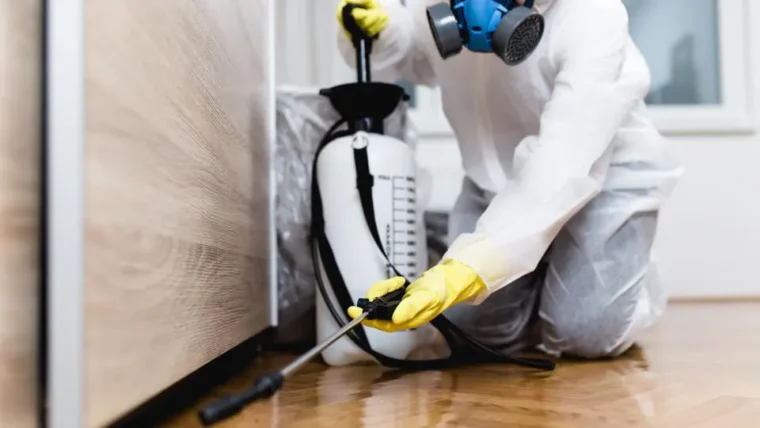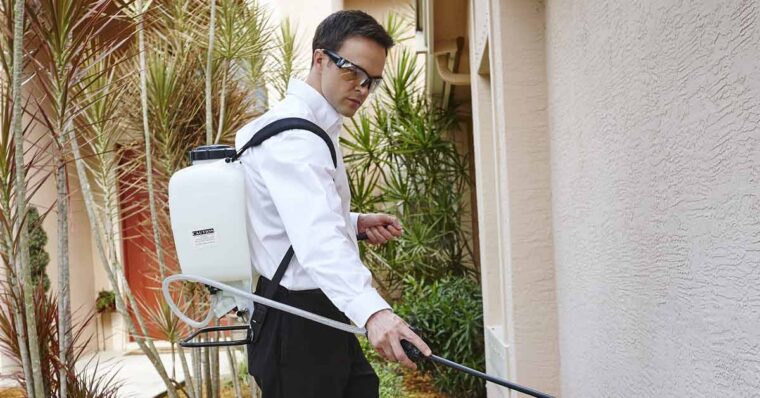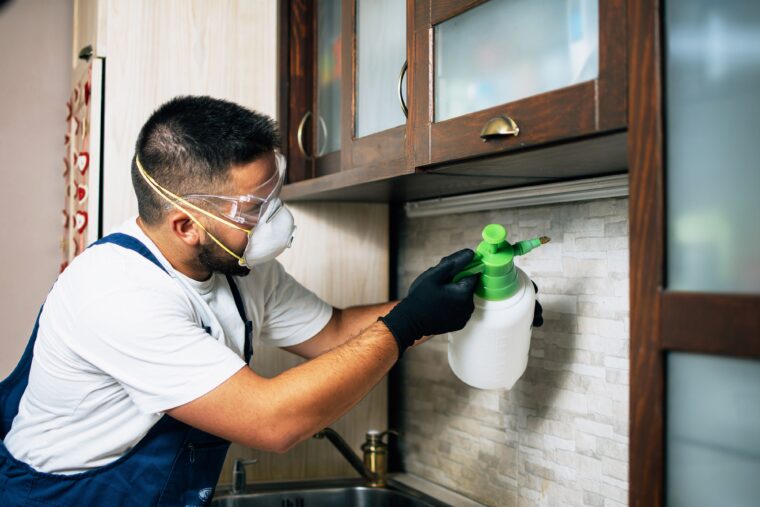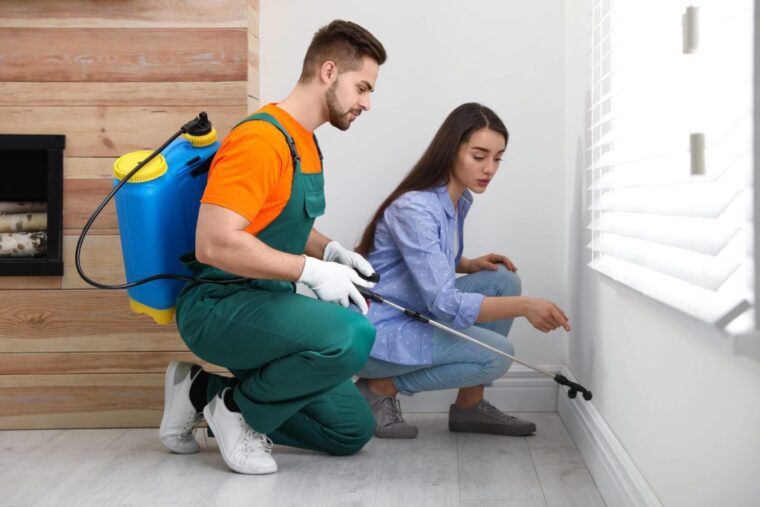Are you a new homeowner who is concerned about pests invading your space? Don’t worry; you’re not alone. Many new homeowners struggle with pest infestations, but with the right knowledge and strategies, you can easily exterminate and prevent pests from invading your home.
In this article, we will provide you with valuable information on common pests found in new homes, signs of pest infestation, prevention techniques, effective strategies for pest extermination, and tips on maintaining a pest-free home. By the end of this article, you will be equipped with the necessary tools to tackle any pest problem that may arise in your new home.
When you become a new homeowner, one of the first things you need to be aware of is the presence of common pests that may be lurking in your new space. From ants and cockroaches to rodents and termites, these pests can cause extensive damage to your property and pose health risks to you and your family.
By knowing which pests are common in your area, you can take the necessary steps to prevent their entry and eliminate any existing infestations. In addition, being able to identify the signs of a pest infestation is crucial in order to address the problem before it becomes a major issue. By paying attention to any unusual sounds, odors, droppings, or damage to your property, you can act quickly to eradicate pests and prevent further damage.
Common Pests Found in New Homes

When you move into a new home, it’s important to be aware of the common pests that may come crawling out of the woodwork. Pest control is essential for maintaining a clean and comfortable living environment.
One of the most common pests found in new homes is ants. These tiny creatures can invade your kitchen and pantry, contaminating your food and causing a nuisance. To prevent ant infestations, it’s important to keep your home clean, seal any cracks or openings where they can enter, and store food in airtight containers.
Another common pest that new homeowners often encounter is rodents, such as mice and rats. These pests can cause extensive damage to your home by chewing through wires, insulation, and even structural materials. Additionally, they carry diseases that can be harmful to humans.
To prevent rodent infestations, it’s important to seal any gaps or openings in your home’s exterior, keep your home clean and clutter-free, and store food in secure containers. If you suspect a rodent infestation, it’s crucial to contact a pest control professional to address the issue promptly.
Being aware of the common pests that can infest your new home is the first step in maintaining a pest-free environment. By implementing proper pest control measures and seeking professional help when needed, you can ensure a clean and comfortable living space for you and your family.
Signs of Pest Infestation

Look out for these telltale indicators that your property may have some unwelcome guests. Signs of pest infestation can vary depending on the type of pest, but there are some common signs you should be aware of.
One of the most obvious signs is the presence of droppings or feces. Whether it’s small droppings from mice or larger droppings from rats, finding these in your home is a clear indication that pests are present.
Another sign to look out for is damage to your property. Pests such as termites, carpenter ants, or rodents can cause extensive damage to the structure of your home. Look for chewed wires, gnaw marks on furniture or walls, or holes in food packaging.
Another sign of pest infestation is strange noises coming from within your walls or ceiling. Pests like rats, mice, or even squirrels can make scratching or scurrying sounds as they move around in search of food or nesting spots. If you hear these noises, it’s important to investigate further to determine the source.
Additionally, if you notice an unusual or unpleasant odor in your home, it could be a sign of pests. For example, a musty smell could indicate the presence of mold caused by excessive moisture, which can attract pests like cockroaches or silverfish. Pay attention to any strange odors and try to identify their source.
By being vigilant and recognizing these signs of pest infestation, you can take early action to address the problem and protect your new home.
Prevention Techniques for New Homeowners

One effective way to ensure a pest-free environment is by implementing preventive measures in your new home. Pest management is crucial for new homeowners to maintain a clean and healthy living space.
Start by sealing any cracks or holes in the walls, floors, and foundation of your home. Pests can easily find their way into your house through these openings, so it’s important to address them as soon as possible.
Additionally, make sure all windows and doors are properly sealed with weather-stripping to prevent pests from entering. Regularly inspect and clean your gutters to avoid water buildup, as this can attract pests like mosquitoes and ants.
Another important aspect of pest management is maintaining cleanliness in your home. Regularly sweep, vacuum, and mop floors to remove any food crumbs or spills that might attract pests. Keep your kitchen clean by wiping down countertops, washing dishes promptly, and storing food in airtight containers.
Dispose of garbage regularly and ensure that trash cans are tightly sealed. It’s also a good idea to trim any tree branches or shrubs that touch your home, as these can serve as bridges for pests to enter.
By implementing these preventive measures, you can greatly reduce the risk of pest infestation in your new home and create a comfortable living environment for you and your family.
Effective Strategies for Pest Extermination

To effectively eliminate unwanted critters from your living space, it’s essential to employ strategic methods that will rid your home of pests once and for all. Here are four effective strategies for pest extermination:
1. Identify and seal entry points:
Inspect your home thoroughly to identify any cracks, gaps, or openings that pests might use to enter. Seal these entry points with caulk, weather-stripping, or steel wool to prevent pests from gaining access to your home.
2. Keep your home clean and tidy:
Pests are attracted to food and clutter. Make sure to clean up spills and crumbs promptly, store food in airtight containers, and regularly empty trash cans. Additionally, declutter your living spaces and minimize hiding spots for pests.
3. Eliminate standing water:
Many pests, such as mosquitoes and roaches, thrive in moist environments. Remove any standing water sources around your home, such as leaky pipes or clogged gutters. Ensure proper drainage and repair any leaks to make your home less appealing to pests.
4. Use traps and baits:
Depending on the type of pest, traps, and baits can be effective in controlling their population. Place sticky traps, snap traps, or bait stations in areas where pests are commonly found. Follow the instructions carefully and regularly check and replace these traps to maximize their effectiveness.
By implementing these effective strategies for pest extermination, you can ensure a pest-free living environment in your new home. Remember to be consistent and proactive in your approach to keep pests at bay. If the infestation persists despite your efforts, it’s advisable to seek professional pest control services for a thorough and long-lasting solution.
Maintaining a Pest-Free Home

Keeping your living space free from unwanted critters is like maintaining a beautiful garden; it requires ongoing effort and regular maintenance.
To maintain a pest-free home, it’s important to implement preventive measures and stay vigilant in identifying and addressing any signs of infestation.
Start by inspecting your home regularly for any cracks or openings that pests could use as entry points. Seal up these gaps using caulk or other appropriate materials to prevent pests from entering your home.
Additionally, keep your home clean and free from food debris that can attract pests. Clean up spills and crumbs immediately, and store food in airtight containers.

Regularly empty and clean your trash cans to avoid attracting pests. It’s also essential to maintain a clutter-free home, as clutter provides hiding places for pests. Keep your belongings organized and regularly declutter to eliminate potential hiding spots for pests.
Incorporating these preventive measures into your routine will go a long way in maintaining a pest-free home. However, if you do notice any signs of infestation, such as droppings, gnaw marks, or unusual sounds, it’s crucial to address the issue promptly.
Contact a professional pest exterminator to assess the situation and implement effective strategies to eliminate the pests from your home. Remember, proactive and preventive measures are key to keeping your home pest-free.
Conclusion
By understanding the signs of pest infestation and implementing effective prevention techniques, you can maintain a pest-free home and protect your property from potential damage. Remember to regularly inspect your home for any signs of pests and promptly address any issues that arise.
One interesting statistic that may engage you is that, according to a recent survey, 84% of new homeowners experience a pest problem within the first year of moving into their new home. This highlights the importance of being proactive in pest prevention and taking immediate action if you notice any signs of infestation.
By staying vigilant and implementing the strategies discussed in this article, you can significantly reduce the risk of pests entering your new home and ensure a safe and comfortable living environment for you and your family.
In conclusion, pest extermination for new homeowners is a crucial aspect of home maintenance. It’s not only about dealing with the current pest problem but also about taking preventive measures to avoid future infestations.
By being knowledgeable about the common pests found in new homes, understanding the signs of infestation, implementing effective prevention techniques, and using appropriate strategies for extermination, you can create a pest-free environment and protect your investment.
Remember to stay informed, take immediate action when necessary, and regularly maintain your home to ensure it remains pest-free.
